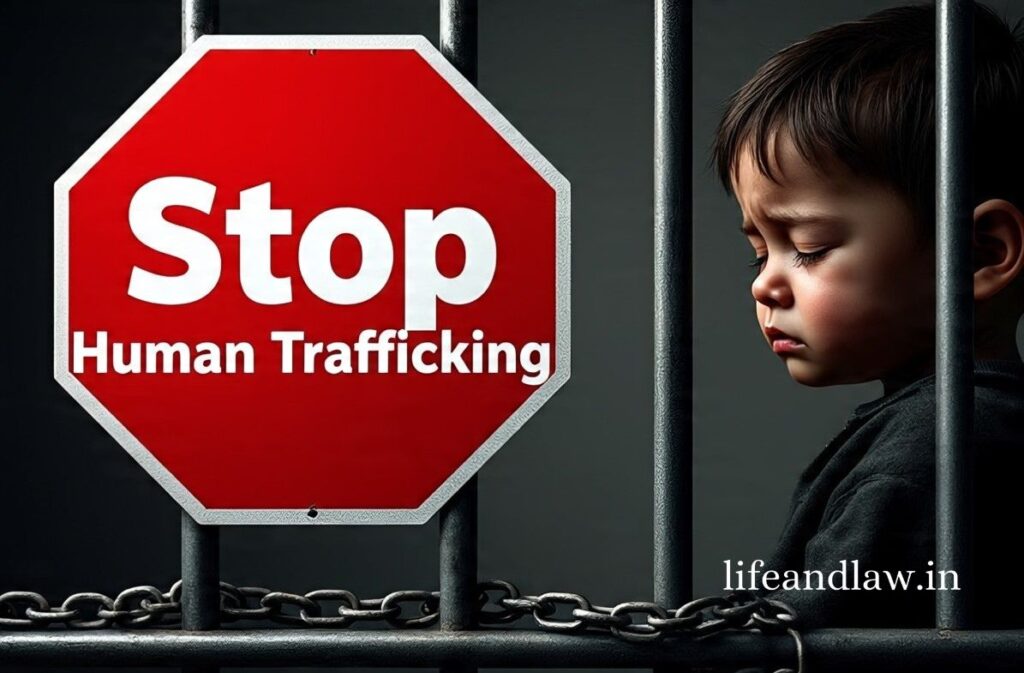Trending

Every year, July 30 is designated as World Day Against Trafficking in Persons, a stark reminder of one of the world’s most terrible and pervasive crimes—human trafficking. Victims of trafficking are frequently among the most vulnerable groups, including children, women, refugees, minorities, and the poor. Despite being a global issue, many incidents go unnoticed due to fear, stigma, or a lack of legal representation.
This article delves into the legal safeguards established to protect these vulnerable populations, examines international and national frameworks, and discusses how laws may be strengthened to combat trafficking more effectively.
The United Nations Protocol to Prevent, Suppress, and Punish Trafficking in Persons (2000) defines human trafficking as the recruitment, transportation, transfer, harboring, or receipt of persons through coercion, abduction, fraud, deception, or abuse of power for the purpose of exploitation.
Trafficking can take the following forms:
Sex Trafficking
Forced Labor
Child Trafficking
Organ trafficking
Domestic Servitude
Women and children are disproportionately affected. According to the UN Office on Drugs and Crime (UNODC): Women and girls make up to over 70% of recognized trafficking victims, with children accounting for almost one-third. Individuals in vulnerable conditions are frequently targeted by traffickers, such as those who have been uprooted by violence, ostracized by society, or are economically challenged.
The Palermo Protocol, a cornerstone of international anti-trafficking law, supplemented the UN Convention Against Transnational Organized Crime. It focuses on:
It also requires countries to enact national laws consistent with the convention.
The ILO’s Convention No. 182 on the Worst Forms of Child Labour and Convention No. 29 on Forced Labour are critical in fighting labor-related exploitation. These accords require countries to eradicate practices such as child labor, debt bondage, and forced recruitment.
Several regional efforts, such as the European Union’s Anti-Trafficking Directive and the ASEAN Convention Against Trafficking in Persons, strengthen global norms and improve cross-border collaboration.
Many countries have passed anti-trafficking legislation in accordance with international norms. For example:
United States: The Trafficking Victims Protection Act (TVPA) establishes a comprehensive structure for victim support, criminal punishments, and international monitoring.
India : The proposed Trafficking of Persons (Prevention, Protection and Rehabilitation) Bill takes a victim-centric approach, including specific provisions for women and children.
Modern anti-trafficking legislation prioritizes victim welfare.
Non-criminalization: Victims are not held accountable for illegal activities undertaken as a result of being trafficked.
Rehabilitation Services: Legal assistance, medical care, psychosocial support, and shelters.
Confidentiality and witness protection while being prosecuted.
The Convention on the Rights of the Child (CRC) requires special protection for minors, especially against sexual and labour exploitation.
CEDAW (Convention on the Elimination of All Forms of Discrimination Against Women) holds states responsible for failing to combat trafficking and gender-based violence.
Despite strong legislative frameworks, enforcement remains an issue.
Law enforcement organizations frequently lack the necessary expertise and resources to adequately detect and investigate human trafficking cases, particularly when victims are hidden in private residences or informal sectors.
In some countries, corruption impedes the administration of justice. Victims may be discouraged from testifying because they fear retaliation or lack of safety.
Some countries lack comprehensive victim identification mechanisms or may not provide protection against all forms of trafficking. The absence of robust international extradition treaties can also impede cross-border justice.
Laws are more than just punishment; they are also important tools for education and prevention.
Governments and non-governmental organizations (NGOs) organize legal awareness programs to enlighten vulnerable communities about their rights and warning indications of trafficking. These initiatives are frequently mandated or supported by legislation.
Laws are progressively requiring mandatory training for law enforcement, healthcare practitioners, and educators to assist them spot indicators of trafficking and respond effectively.
Trafficking networks operate across boundaries, thus international cooperation is critical. Legal tools such as mutual legal assistance treaties (MLATs), regional cooperation forums, and data-sharing agreements are critical in:
Tracking organized criminal networks.
Protecting and repatriating victims.
Coordinate extradition and prosecution activities.
Institutions such as INTERPOL and the International Criminal Court can help prosecute situations of mass or systemic trafficking.
Governments must change their laws on a regular basis to handle growing concerns like online trafficking. Victim support services must be well-funded and accessible.
NGOs and advocacy organizations play a critical role in:
Offering legal assistance to victims.
Keeping officials accountable.
Proposing progressive legal reforms.
Empowerment starts with legal literacy. Communities must have the information and skills to recognize, prevent, and report trafficking incidents.
Human trafficking is more than just a crime; it is a serious violation of human rights. According to Adv. Abdul Mulla, legal practitioner and founder of www.asmlegalservices and www.lifeandlaw.in, strong legal frameworks are our most effective weapon against trafficking, especially when they are built around the needs and voices of the most vulnerable—children, women, and marginalized communities.
On this World Day Against Trafficking in Persons, let us renew our joint commitment to upholding law, justice, and community action. Together, we can create a future in which every individual’s dignity, freedom, and fundamental rights are fiercely protected.
Adv. Abdul Mulla (Mob. No. 937 007 2022) is a seasoned legal professional with over 18 years of experience in advocacy, specializing in diverse areas of law, including Real Estate and Property Law, Matrimonial and Divorce Matters, Litigation and Dispute Resolution, and Will and Succession Planning. read more….
Copyright BlazeThemes. 2025